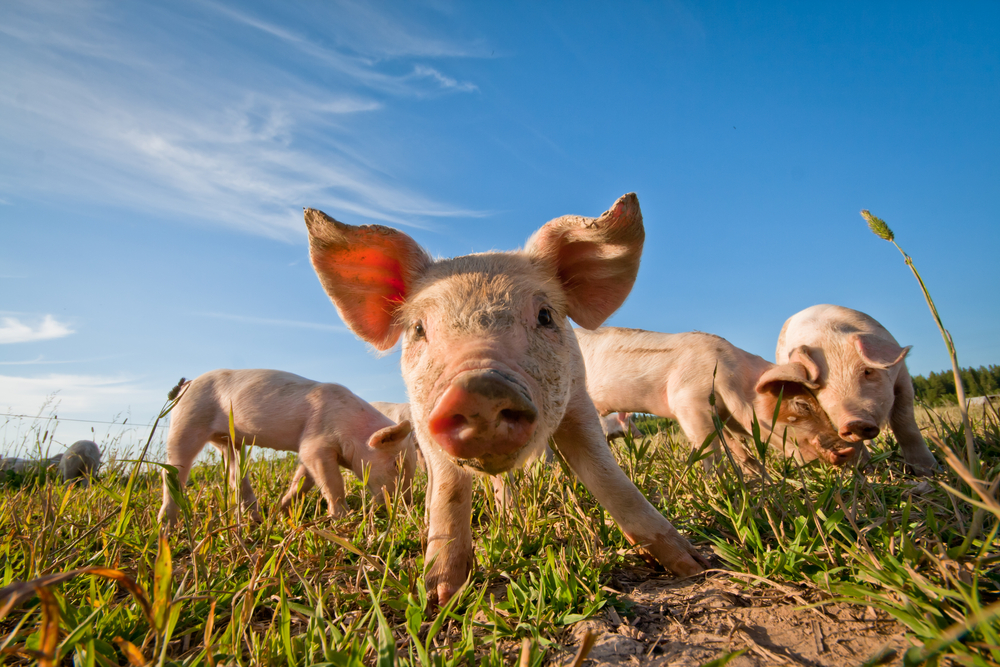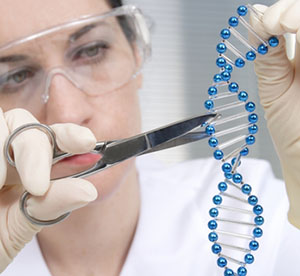
First Dolly, now Piglet; a new Huntington’s disease pig knock-in model confirmed
For the first time in HD research, an animal model has been created in pigs using 2 cutting edge DNA editing t
Exciting news for the HD research field this month as a new genetically faithful model has been created in pigs. Using a combination of cutting edge DNA editing tools researchers were able to generate HD pigs that not only replicated the selective brain cell death seen in HD, but also a broad range of symptoms observed in HD.
Animal Models
Neurodegenerative diseases like Huntington’s disease (HD) are particularly tricky for researchers to study, because unlike liver or kidney disease for example, the organ that’s damaged (the brain) isn’t exactly available to take samples from. Therefore, we have to make do with the next best thing, which are animal models produced to replicate the damage and symptoms we see in human patients.

The majority of the information we have on HD so far has been gathered from such models, particularly studies completed in mice. Safe to say if we didn’t have these wonderful tools, HD research would be several decades behind where we are currently! Having said that, a mouse is a mouse…not a human; we have differences in brain structure, size, lifespan and the list goes on and on. Therefore not everything that’s been discovered in HD mouse models has been found in the human condition.
And now, pigs
What we really need is a middle ground, a larger animal that has more commonalities to humans, a stepping stone or piggy in the middle (known as Keep Away across the pond) if you will. As luck would have it, this is literally what we now have thanks to the combined efforts of an American-Chinese team.
Researchers from Emory University and Jinan University’s Guangdong-Hongkong-Macau Institute of CNS Regeneration have generated a genetic model of HD in pigs using two very cool techniques which rely on genome editing. This is a nifty process where scientists can go into the DNA of a cell, and edit it, sometimes to correct the errors that nature has made – think of when you hand in a paper, you normally do a first draft right? Well in this case, nature is the first draft, and scientists are the proof-readers. The techniques used in this particular study are called CRIPSR/Cas9 (see https://en.hdbuzz.net/244) and somatic nuclear transfer – the latter is the same technique used to clone Dolly the sheep back in 1996.
So how exactly does this work? Is it quite technical and tricky to do? Essentially yes, but it’s super cool science and as this study shows, it is doable!
“As if that wasn’t cool enough, the truly exciting result of this new work was that the pigs themselves had very dramatic symptoms, which appeared to mimic what’s seen in human HD patients much more closely than in rodents.”
To put it simply, we can take the pig version of the HTT gene, cut part of it out and directly swap it for the human version which causes HD – this is the ‘proof-reading’ bit. The authors did this in pig skin cells, but then (and this is the really cool part) took out the nucleus of the cell, which contains all the DNA, and put this nucleus into what would become a pig embryo. Using a surrogate pig, they then bred several generations and found that the alteration was successfully passed down from parent to child in the same way HD is in humans. For those that don’t know, a group of piglets is called a drift, and that’s exactly what these researchers had; a drift of piglets, some of which had HD.
Benefits of the pig model
As if that wasn’t cool enough, the truly exciting result of this new work was that the pigs themselves had very dramatic symptoms, which appeared to mimic what’s seen in human HD patients much more closely than in rodents. The movement abnormalities, or chorea, that patients experience was replicated as the pigs developed walking and running difficulties with age. Videos of the pigs reveal very clear movement abnormalities that really do resemble a human HD patient. Surprisingly, no rodent model of HD has this type of movement problems, which has been a big problem for testing new therapies in mouse models of HD.
In terms of brain changes, remarkably the HD pigs had a lot of the same damage as HD patients. You may have heard about medium spiny neurons before in the context of HD (no puns here, they really are spiny). These neurons are the first casualties in HD patient brains, and die very quickly in the course of the disease, which probably explains the movement problems that happen early in HD.
Researchers have been pretty flummoxed as to why this selective loss of cells happens, and despite decades of research we still don’t really know why the spiny ones are so sensitive! We may not be too far from a light bulb moment now however, as in these pigs, the researchers found selective loss of spiny neurons as well as many other neurological features of human HD.

Similar to what happens elsewhere in the body, when there is an injury in the brain you get an immune response. In the brain, specialised cells are ‘switched on’ when damage occurs in a process called gliosis. This immune response is found in the brains of human HD patients; however previous animal models have typically struggled to replicate this feature of disease. Here the knock-in pig model prevails once again, with the researchers finding marked evidence of gliosis occurring in diseased pigs – this study really brought home the bacon!
On a different note, what you may not know about HD is that the majority of patients don’t pass away from the actual brain damage itself, but instead the knock-on effects. If you think about it, the brain controls all of our conscious decisions, as well as everything we do without thinking about it, like breathing.
When we lose a large part of the brain, everything in our body suffers as a result, and it’s actually breathing difficulties and pneumonia that claim so many HD patient lives. Critically, this has never before been shown in a HD animal model, but the knock-in pigs in this study developed the exact same breathing difficulties that patients experience, which is pretty groundbreaking.
All of these things together made for a very exciting read as a HD researcher, as it seems we finally have a model that replicates the journey of a HD brain and body from start to finish. The excitement doesn’t stop there though; due to the physical size of pigs we will be able to test potential treatments and specialised drug delivery routes that have previously been impossible.
For example the potential treatment in the headlines currently, ASO mediated HTT lowering. This has to be delivered by lumbar puncture i.e. injection directly into the spine. I challenge those of you even with the steadiest of hands to attempt that on a mouse…it’s not going to happen – a pig however, much more feasible.
“All of these things together made for a very exciting read as a HD researcher, as it seems we finally have a model that replicates the journey of a HD brain and body from start to finish.”
What’s that mean for us?
With that said, nothing in life is perfect and this study is no exception. With increased animal size, comes increased costs in terms of housing and feeding, plus it takes longer for the animals to develop and reach adulthood which could really hinder how quickly new discoveries are made. This undoubtedly contributed to the number of animals used in the experiments discussed here, which were on the low side. The authors did own up to this however and admitted that more rigorous testing would be required, and was in the pipeline.
Issues aside, this new model is pretty incredible and should open many doors for future HD research and therapeutics ventures, so on behalf of HD researchers across the globe, ‘that’ll do pig, that’ll do’.
Learn more
For more information about our disclosure policy see our FAQ…


